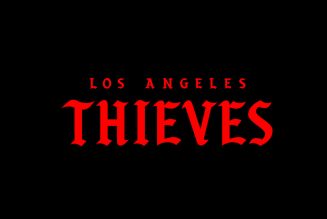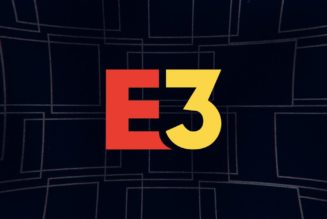The first few hours of The Callisto Protocol are some of the best horror I’ve played in recent memory. It merges classic Resident Evil-style survival horror with the production values of a next-gen game to create something truly terrifying — I sincerely dreaded having to slowly make my way through the crumbling space prison where the game is set, knowing that some new horror awaited me. It’s not very original, but the game is brutal and violent and genuinely scary. Unfortunately, that sense of terror was eventually replaced by frustration, as the game became plagued with jarring difficulty spikes that completely destroyed the tension.
First, a disclaimer: I haven’t actually finished The Callisto Protocol. But it’s not for a lack of trying. After around 10 hours, I made it to what I believe is the final boss (that might be wishful thinking, but it sure felt like it), only to spend another few hours fruitlessly trying to defeat it. I’ve given up for now. There are only so many times you can watch the main character get ripped in half before you need a nice, long break.
Early on, though, I was very much enjoying my time with the game. The Callisto Protocol is developed by Striking Distance Studios, a new team from PUBG company Krafton that’s helmed by Dead Space creator Glen Schofield. (At one point, the game was actually set in the PUBG universe in an ill-fated attempt at brand synergy.) It takes place in a maximum security prison on Callisto, a supposedly dead moon of Jupiter, and you play as Jacob, a freelance delivery man who takes a bad job and ends up locked inside. Almost immediately, things go wrong when a virus starts turning the inmates into zombie-like creatures. Before he can even get acquainted with his cell, Jacob is forced to find his way out of the prison and off the moon.
:format(webp)/cdn.vox-cdn.com/uploads/chorus_asset/file/24248440/TCP_Screen14.png)
a:hover]:text-gray-63 text-gray-63 dark:[&>a:hover]:text-gray-bd dark:text-gray-bd dark:[&>a]:text-gray-bd [&>a]:shadow-underline-gray-63 [&>a:hover]:shadow-underline-black dark:[&>a]:shadow-underline-gray dark:[&>a:hover]:shadow-underline-gray”>Image: Krafton
There’s very little about The Callisto Protocol that’s original. The most obvious influence is Dead Space. It basically feels like a spiritual successor, from the holographic UI to the combat that involves removing zombie limbs to the fact that you have to stomp on corpses to get ammo and health. There are plenty of other clear references as well — enemies that look ripped right out of Resident Evil, or the brutalist prison that looks like it belongs in an Alien spinoff.
This never really bothered me though, mainly because it’s all so well done. Callisto is an old-school survival take on horror, which means it’s extremely linear; most of your time is spent slowly trudging through hallways, whether they’re underground caves or corridors linking the prison together. It’s the kind of highly directed experience that’s become something of a rarity in blockbuster games. It works because every aspect of the experience — the sound design, the dark atmosphere, the slow and heavy combat — is tuned for maximum scares. Few of the techniques the game uses are novel; in fact, it’s full of video game cliches. There are plentiful jump scares to make you think twice about opening a locker in search of ammo, lest an alien parasite leap onto your face.
I’ve seen all of these things before, and yet I was still terrified. Partly this comes down to the incredibly lifelike visuals, which make every space zombie look excruciatingly gruesome, particularly when you’re beating them to death with a metal bar and seeing the blood fly. Some of the death animations are downright disturbing. Callisto’s developers also use tried-and-true techniques like dim lighting, fog, and even a snowstorm to obscure the terrors, making the jumps hit even harder. I also could not play this game with headphones on because the 3D audio was simply too much; hearing zombies skitter around in the vents above made me rip the headphones right off. I had to pause the game regularly to catch my breath.
And despite being a largely linear game, Callisto gives you a surprising amount of freedom for how you approach things. There’s melee combat, a wide range of weapons you upgrade over time, and even a high-tech glove that basically gives you Force powers so you can pick up things (or zombies) and toss them around. I was partial to stealth as much as I could manage, but because this is a survival horror experience, with relatively limited ammo and health, I was forced to utilize pretty much every tool to fend off the zombies. This was especially true once I was confronted with more complicated foes; there are zombies that evolve if you don’t kill them fast enough, and others that skitter around the walls like spiders. Some crawl up to you just to explode. (I hate them.)
:format(webp)/cdn.vox-cdn.com/uploads/chorus_asset/file/24248442/TCP_Screen19.jpg)
a:hover]:text-gray-63 text-gray-63 dark:[&>a:hover]:text-gray-bd dark:text-gray-bd dark:[&>a]:text-gray-bd [&>a]:shadow-underline-gray-63 [&>a:hover]:shadow-underline-black dark:[&>a]:shadow-underline-gray dark:[&>a:hover]:shadow-underline-gray”>Image: Krafton
For the first half or so of the game, it has excellent pacing. I’d find myself methodically clearing out areas of the prison, getting into some tense scrapes along the way, before being able to catch my breath (and catch up on the many, many audio logs) in one of the safe rooms. It was a nice balance between exploration, storytelling, and combat. I didn’t even mind some of the hilariously out of place video game conventions, like the copious graffiti (it’s hard to believe anyone would write “shoot the tentacles” on a wall in blood before they die) or the somehow still-functioning 3D printing vending machines for upgrading your weapons and gear. Up until then, Callisto was right there with Signalis as my favorite horror game of the year so far.
And then I hit the difficulty spikes.
The first involved waves of enemies that I had to fight off while waiting for a service elevator to reach its destination. Soon after that, the game started throwing huge bosses at me that required almost perfect timing to defeat, since one hit would mean death. Even when I turned the difficulty to its lowest possible setting, some of these sequences would take me an hour or more to successfully get through.
These moments were frustrating because they destroyed that carefully directed pacing, but also for a few other reasons. To start, Callisto’s combat is slow and brutal, which is perfect for a steadily-paced horror game. But the enemy waves and boss battles felt more like an action game, and the controls are far too clunky to be running around and shooting (and using the Force) at the same time. I died plenty of times just because it took so long to switch my weapon. The game also has a tendency to have checkpoints start at the worst possible moment, so that you’re returning to the game at the exact second a boss is rushing at you, giving you no time to prepare. And some of the bosses just feel downright unfair. One-hit kills in a game that is otherwise surprisingly forgiving do nothing to make the game more fun or scary. They’re just frustrating.
These issues are exacerbated by Callisto’s linear nature. If you’re stuck at an unforgiving sequence, there isn’t much else you can do besides brute force your way through it (or take a nice calming walk, as I did several times).
I wanted to give up many times throughout the game, but I powered through because of how much I dug the beginning of the game. But eventually a multi-stage boss fight broke me and I had to stop. This is what makes The Callisto Protocol so disappointing. It does so much well, and a huge percentage of the game is a blast. It’s the kind of high-end horror experience that doesn’t really exist outside of Resident Evil. But then it sours things with difficulty that adds absolutely nothing to the experience. In the end, the scariest thing is the wasted potential.
The Callisto Protocol launches December 2nd on the PlayStation 5, Xbox Series X/S, PlayStation 4, Xbox One, and PC.








